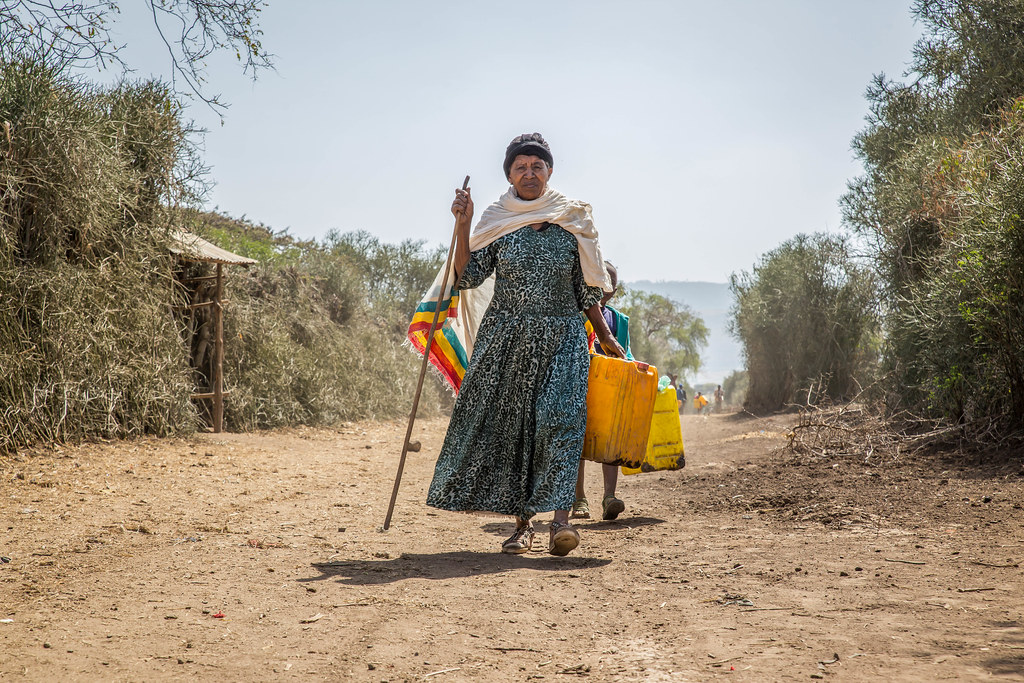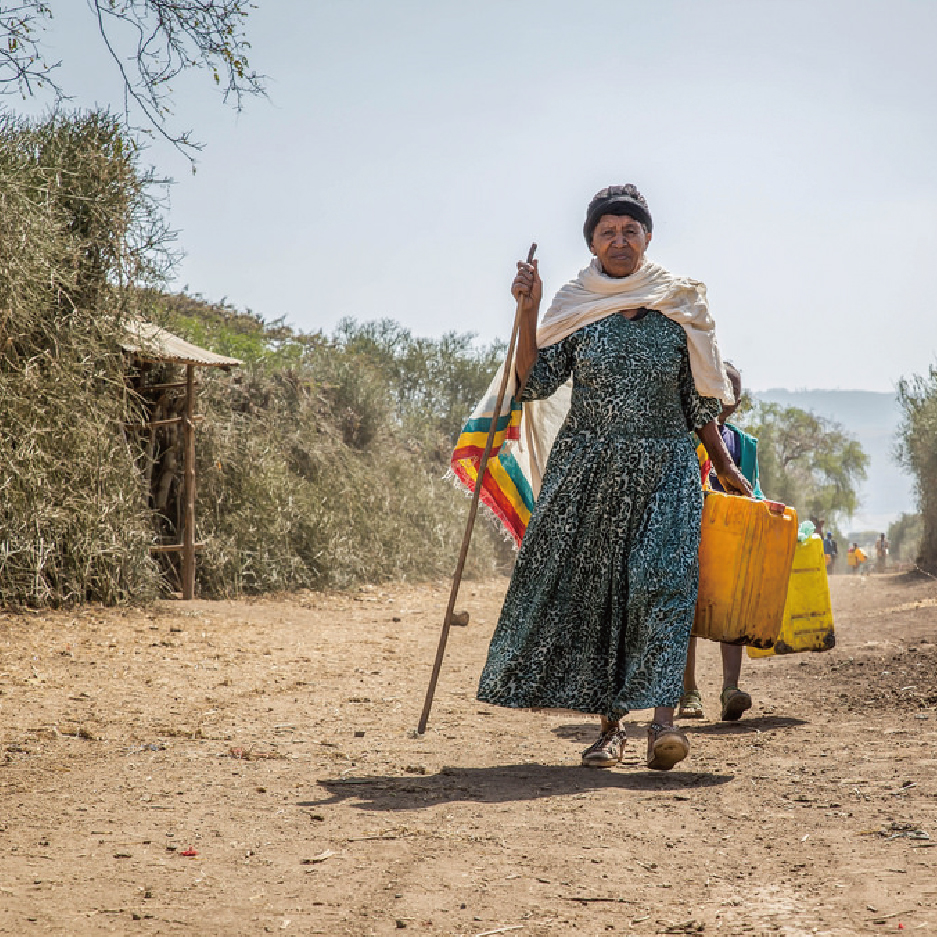17個月前,世界各國政府在聯合國大會上一致同意17項永續發展目標(Sustainable Development Goals,SDG),在2030年前終結貧窮、保護地球和達成均富。其中第六項目標是確保人人可取得水資源和衛生設施,並永續管理。
不過,WHO本月14日發表一份新評估報告「2017年全球衛生設備和飲用水分析評估」(Global Analysis and Assessment of Sanitation and Drinking Water 2017,簡稱GLAAS)指出,世界各國針對目標六所支出的金額增加得不夠快,若不改善使用財源的效率並找出更多新財源,將無法達到目標。

乾淨的水是生命所必須,聯合國說地球上的淡水足以供全球人口使用。但世界衛生組織(WHO)警告,全球75億人口中,近20億人使用著被排泄物污染的水,承受著感染霍亂、痢疾、傷寒和小兒麻痺症的風險。
「被污染的水每年造成超過50萬人因腹瀉死亡,也是許多被忽視的熱帶疾病(neglected tropical diseases)的主因,如腸蠕蟲、血吸蟲病和沙眼。」WHO公共衛生、環境與社會健康因子部門主任尼拉(Maria Neira)博士說。
腹瀉疾病死亡率在2000年至2015年間減少近半,但是2015年仍造成140萬人死亡,比交通事故死亡人數還多,是該年度全世界第八大死因。在五歲以下兒童,腹瀉疾病死亡人數排名則躍升為第二。
淨化全球的水資源並非做不到,只是所費不貲。
聯合國水資源組織主席、國際勞工組織總幹事萊德(Guy Ryder)說:「這個問題我們有能力解決。增加水資源與衛生設備相關投資能顯著改善人類健康與發展,促進就業,確保人人受到照顧。」

GLAAS 2017報告分析來自75國、25個依SDG支援水資源與衛生設備金融服務之外部機構的最新可靠資料,發現過去三年間,各國水資源和衛生保健的年度預算增加4.9%。
不過,80%的國家回報,水資源與衛生保健相關財源不足以達成國家自己訂定的目標。
報告指出,腹瀉疾病是全世界兒童死亡率的主要來源,造成10%的五歲以下兒童死亡。
為了達成SDG,世界銀行估計基礎設備投資必須每年成長兩倍直到1140億美元,不含營運和養護成本。報告指出,目前總計有57個國家、涵蓋44億人口規劃了共850億美元的預算給水資源與衛生保健。
雖然資金缺口很大,但已取得部份進展。亞洲開發銀行今年起的水資源融資計劃年度貸款目標將從20億美金提高到30億美金。世界銀行董事會批准了印度Madhya Pradesh都市開發計畫,超過85萬都市居民將直接受惠於以水資源與衛生設備為主的都市硬體設施改善。
報告指出,2012年起,水資源與衛生方面分配到的援助和健康、難民與人道救援等其他發展項目相比穩定下降。
世界銀行、歐洲執委會和亞洲開發銀行等許多主要多邊機構指出,雖然政策或優先順序上沒有傳出大幅改變,但2015年水資源與衛生相關的海外發展協助確實大幅減少。
Clean, accessible drinking water is essential for life, and the United Nations says there is enough fresh water on the planet to supply this for everyone. But today, the World Health Organization warned that of the 7.5 billion people living on Earth, almost two billion people use a source of drinking-water contaminated with feces, putting them at risk of contracting cholera, dysentery, typhoid and polio.
“Contaminated drinking-water is estimated to cause more than 500,000 diarrheal deaths each year and is a major factor in several neglected tropical diseases, including intestinal worms, schistosomiasis, and trachoma,” said Dr. Maria Neira, WHO director, Department of Public Health, Environmental and Social Determinants of Health.
The death rate from diarrheal diseases was almost halved between 2000 and 2015, but these diseases still caused 1.4 million deaths in 2015.
Diarrheal diseases were the eighth leading cause of death worldwide in 2015, claiming more lives than traffic fatalities. And among children under five years old, diarrheal diseases are the second leading cause of death.
Cleaning up the world’s water supply is do-able, but it’s not cheap.
Just 17 months ago, world governments at the UN General Assembly unanimously adopted a set of 17 goals to end poverty, protect the planet, and ensure prosperity for all by 2030 as part of a new sustainable development agenda.
Known as the Sustainable Development Goals, SDGs, they include Goal 6: to ensure availability and sustainable management of water and sanitation for all.
Today the World Health Organization reported in a new assessment that countries are not increasing spending fast enough to meet the water and sanitation targets for Goal 6.
The Global Analysis and Assessment of Sanitation and Drinking Water 2017, or GLASS, stresses that countries will not meet global aspirations of universal access to safe drinking-water and sanitation unless steps are taken to use financial resources more efficiently and increase efforts to identify new sources of funding.
“This is a challenge we have the ability to solve,” says Guy Ryder, chair of UN-Water and Director-General of the International Labour Organization. “Increased investments in water and sanitation can yield substantial benefits for human health and development, generate employment and make sure that we leave no one behind.”
The GLAAS 2017 report presents an analysis of the most reliable and up-to-date data from 75 countries and 25 external support agencies on issues related to financing universal access to water and sanitation under the SDGs.
The GLAAS 2017 report finds that countries have increased their budgets for water, sanitation and hygiene at an annual average rate of 4.9 percent over the last three years.
Yet, 80 percent of countries report that water, sanitation and hygiene, WASH, financing is still not sufficient to meet nationally-defined targets for these services.
The report indicates that diarrheal diseases are among the main contributors to global child mortality, causing about 10 percent of all deaths in children under five years.
In order to meet the SDG global targets, the World Bank estimates investments in infrastructure need to triple to US$114 billion per year – a figure which does not include operating and maintenance costs.
The report shows that more than US$ 85 billion is budgeted for WASH in 57 countries representing a population of 4.4 billion.
While the funding gap is vast, some positive movement is taking place.
The Asian Development Bank is increasing its Water Financing Programme annual lending target from US$2 billion to US$3 billion starting this year.
The World Bank Board Wednesday approved a US$116.20 million loan for the Madhya Pradesh Urban Development Project. Over 850,000 urban residents are expected to benefit directly through access to improved urban services, mostly water and sanitation.
The report points out that the proportion of aid allocated to water and sanitation has steadily declined since 2012 by comparison with other development priorities, such as health, refugees, and humanitarian assistance.
Several major multilateral institutions, including the World Bank, the European Commission, and the African Development Bank reported large decreases in overseas development assistance commitments for water and sanitation in 2015, though none reported a major policy or priority shift away from water and sanitation.
